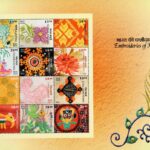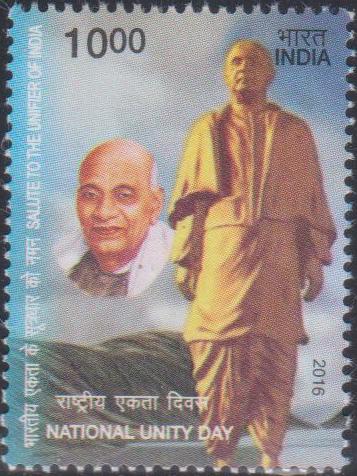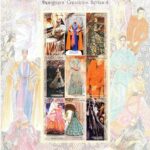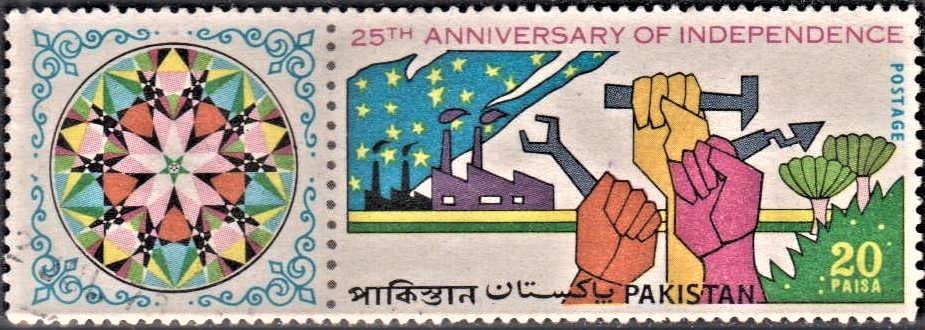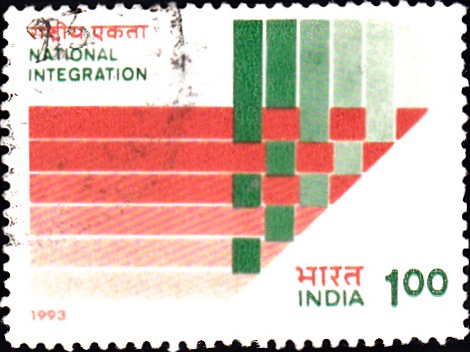
India on National Integration 1993
A commemorative postage stamp on the National Integration :
![1379 National Integration [India Stamp 1993]](https://www.istampgallery.com/wp-content/uploads/2016/06/1379-National-Integration-India-Stamp-1993.jpg) Issued by India
Issued by India
Issued on Aug 19, 1993
Issued for : The special and commemorative postage stamps issued by the Department of Posts have depicted over the years the myriad aspects of our national heritage and culture. The stamp issued today emphasizes the need for evolving a harmonious concept through integration of the diverse elements in our national fabric.
Design : The stamp design, in the colours of the national standard, shows a matrix which conceptualises the strength born out of a weaving of different strands. The First Day Cover depicts the National Integration logo which shows stylised human elements superimposed on petals of a flower. The repetitive motif creates a sense of rhythm expressing the essence of the idea of unity.
Design Credits :
Stamp : Shri C.R. Pakrashi
FDC : National Integration Logo provided by the courtesy of Ministry of Home Affairs, Government of India.
Cancellation : Smt. Alka Sharma, Department of Posts.
Type : Stamp, Postal Used
Colour : Two Colours
Denomination : 100 Paise
Overall size : 3.91 x 2.90 cms.
Printing size : 3.55 x 2.54 cms.
Perforation : 13 x 13
Paper : Imported un W/M adhesive gravure coated Stamp paper in reels 47 cms.
Number of stamps Printed : 1 Million
Number per issue sheet : 35
Printing Process : Photogravure
Printer : India Security Press
About :
- Our tryst with destiny that began during the struggle for freedom did not end with the departure of the foreign rulers. Possession of State power was our first task because without that we could not chart our own path to achieve the national objectives. But State power by itself could not ensure achievement of our goal, “Purna Swaraj”. We sought to create a society where political, economic and spiritual freedom for the individual could be harmonized with the social objectives enshrined in our Constitution.
- Attainment of Purna Swaraj presupposed an integration of the diverse strands in the national fabric, all fostering patriotism, and a common enthusiasm nurturing a common interest for all round development of the country – the socio-economic and cultural diversities giving rise to a grander canvas through mutual acceptance and assimilation. It is like a rivulet, getting broader and more turbulent when joined by its tributaries and developing into a magnificent river.
- Since the beginning of our struggle for freedom, questions were asked and doubts expressed if it was possible in case of India, divided by different faiths, races, castes and inhabited by superstitions and prejudices to mould itself into a nation – state. Repeatedly such misgivings were rebutted. “There is only one India” Pandit Nehru declared “of which all of us, you and I, are inheritors……”. “All the culture of India, whether it comes from the North or the South or anywhere else, is our common heritage……,” The unity of language, unity of religion, race and culture are no doubt helpful for national integration, but they are not essential and do not themselves assure the growth of common interests and aspirations. National integration can be founded more easily on the bedrock of geographical unity, a common heritage, a common concern for the present and a common aspiration for the future, helping to evolve favourable socio-political and economic conditions to enable such an impulse to realize itself through growth and prosperity which elevates all and where every man, woman and child partakes of that adventure of building a nation.
- Integration to strengthen the national fabric is essential to fulfil the promises that India holds not only for its own citizens, but for the world as well. We have a glorious heritage that became richer over the centuries by assimilating the best of different cultures. As Jawaharlal Nehru put it, “Ever since the distant past it has been India‘s proud privilege to live in harmony with each other. Long ago the Buddha taught us this lesson. From the days of Ashoka, 2300 years ago, this aspect of our thought has been repeatedly declared and practised. In our own day Mahatma Gandhi laid great stress on it. We have, therefore a precious heritage to keep up“.
- A time has come when India has to revive her centuries old culture of harmonizing the parts into a perfect symphony of national development and be a guiding moral force for the world at large.


